Last-Minute NYC Holiday Gift Guide 🎁
We’ve created a holiday gift guide with presents for the intrepid New Yorker that should arrive just in time—


Hell’s Kitchen has come a long way from its Colonial farm days and the gang violence of the mid-2oth century that has come to define a large part of its modern history. Clinton Hill, which the neighborhood is also known as, has been rapidly evolving since the early 1990s and has become a hot spot for visitors and residents. The neighborhood is roughly located between West 57th Street and West 34th Street to the north and south, and the Hudson River and Eighth Avenue to the east and west,
The development of Hudson Yards, a $15B development project creating 18 million square feet of residential and commercial space just south of the outskirts of the neighborhood, will continue to boost Hell’s Kitchen’s growth into the future, and with it will bring new and exciting locations to visit in the neighborhood.
Here are 18 must-visit spots to check out now:
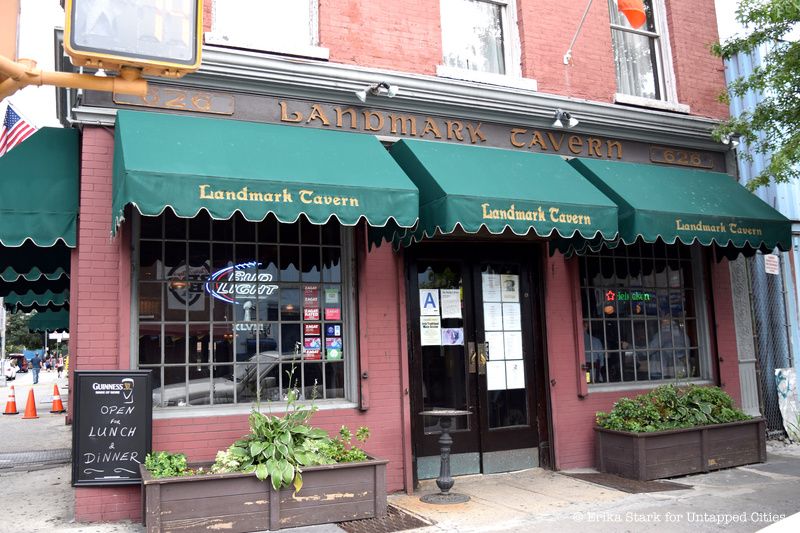
The Landmark Tavern at 626 11th Ave. has been in operation since its opening in 1868, making it one of New York City’s oldest operating bars. Patrick Henry Carley first opened his Irish saloon on the shore of the Hudson River, as 12th Avenue did not exist yet. He provided enough space in the establishment for his family to live comfortably on the second and third floors of the building. It was on this third floor that The Landmark Tavern moved its operation during the Prohibition era and continued to run its bar illegally as a speakeasy.
The bar is also said to be haunted as well. According to the stories, a Confederate soldier was either stabbed or shot in a bar fight at The Landmark Tavern and died in a bathtub on the second floor, where he occasionally knocks over books on the bookshelves today. Even more amazing, the actual bathtub in which the soldier died is still in the very same room!
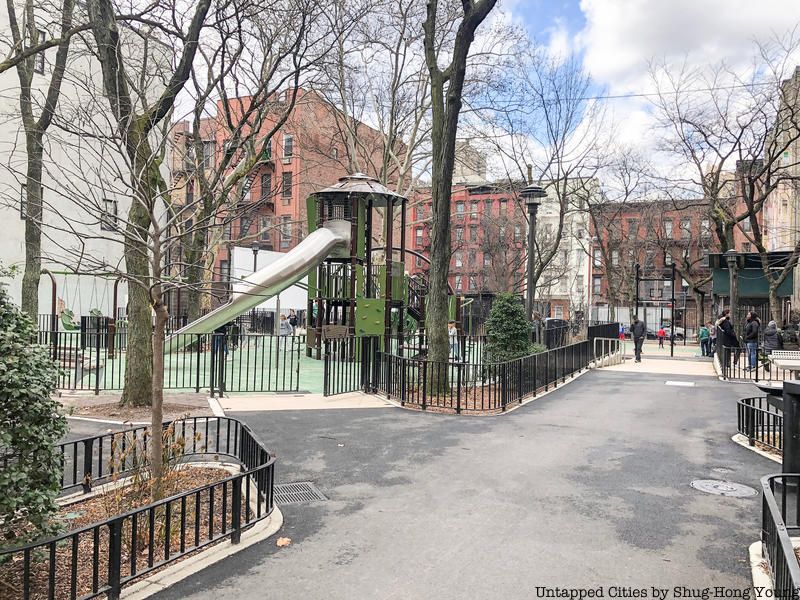
Matthews-Palmer Playground, formerly May Matthews Playground, has a darker history that belies its current kid-friendly demeanor. The 45th St. playground has become a microcosm of Hell’s Kitchen as a whole and come a long way to overcome its gang-filled past.
In 1959, the park became home to historic gang murders. As Sondheim’s West Side Story played just blocks away, Salvador Agron, a member of the Puerto Rican Vampires, stabbed and killed two teenagers, both members of a rival Irish gang, The Norsemen. “The Capeman” as he would later be nicknamed, “killed because he felt like it,” and would launch a series of events that would eventually lead gangs like The Westies to run the neighborhood until the 1980s.
The playground isn’t exactly too fond of displaying its bloody and questionable history, but it is without a doubt a historical site that was home to events that have made Hell’s Kitchen what it is today.

The initial headquarters for the publication The New Yorker was in an apartment building at 412 West 47th St. In 1925, Harold Ross and his wife Jane Grant, both journalists, founded the publication when searching for an alternative humorous publication style from that of the popular corny humor of the time.
Since its first issue almost 100 years ago, The New Yorker has changed addresses several times to accommodate its growth and has evolved from just publishing humorous pieces to becoming a serious contributor to the world’s of journalism and fiction literature, becoming one of the world’s most respected magazines. Some of literature’s most prominent and talented names have seen their work published in the magazine, like Roald Dahl, J.D. Salinger, and Stephen King, to name a few.
The New Yorker’s headquarters are currently located at 1 World Trade Center.
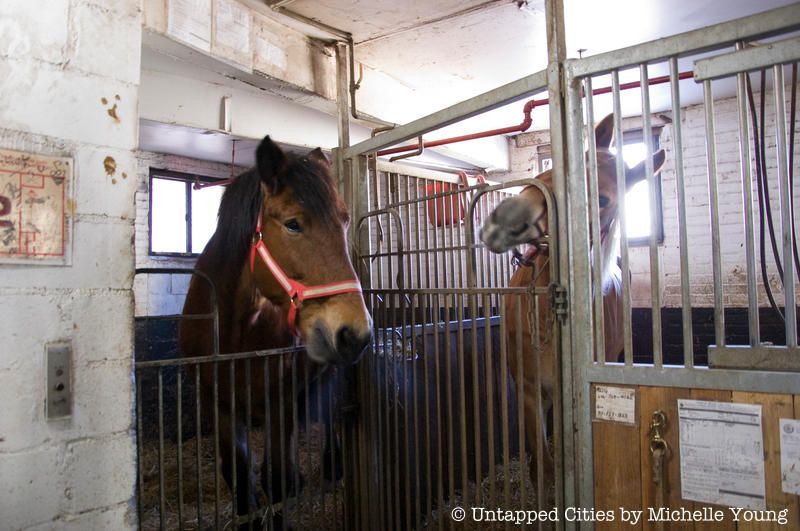
Built in the 1880s for the sanitation department’s horses, the stables in which many of Central Park‘s carriage horses live are located at 618 W 52nd Street. The Clinton Horse Stables are privately owned, but like the carriages in Central Park themselves, they are run by a co-op of individual medallion owners.
It is the largest of the four stables throughout New York City, hosting a majority of the city’s carriages. The Clinton Horse Stables are filled with misting fans that are used on hot summer days to keep the horses cool when they aren’t on their required five-week-a-year vacation away from the stables, and each horse is kept in an 8×10 foot stall, which is larger than the city’s required 6×10. The stables are also equipped with anything else the horses need, including a wash stall, an anvil, and loads of hay and bedding. Any old bedding, and manure, are sent to a mushroom farmer in New Jersey to use for cultivation.
See photographs from our visit behind the scenes here.
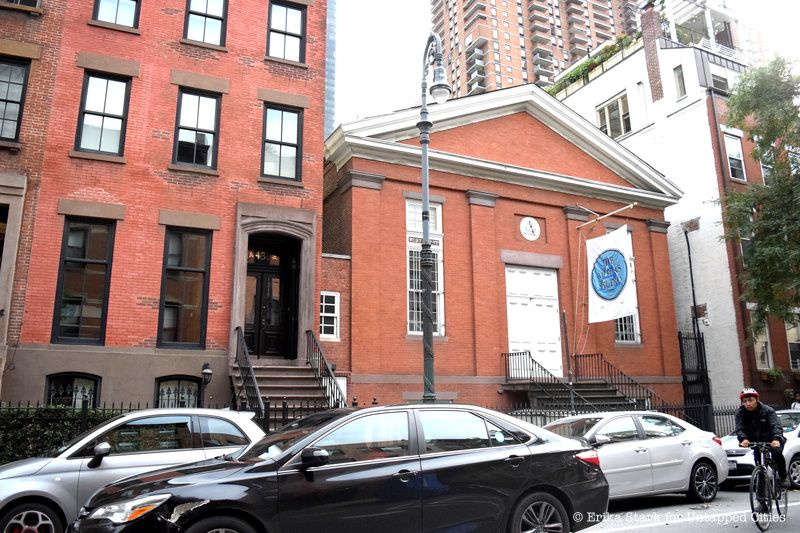
The Actors Studio at 432 W 44th Street is one of its two locations in the country. The studio is a non-profit organization that has helped many renowned actors in their careers and membership has served as a career goal for anyone in the field.
While The Actors Studio isn’t a school, they have created a separate three-year Masters Degree in Fine Arts through Pace University in New York City to help further their members’ art. The studio us not exactly open to the public for tours, but as work is being continuously put out, audiences are welcomed into the studio for free viewings once something is deemed ready. If you are interested in viewing a piece at The Actors Studio, its season typically runs from September to mid-summer.

DeWitt Clinton Park, located between W 52nd and W 54th Street and 11th and 12th avenues was one of the first parks in Manhattan to be on the working waterfront of the Hudson River. It was named after DeWitt Clinton, who was the sixth governor of New York and was largely responsible for the construction of the Erie Canal, which created a business boom on and around the Hudson.
The park originally started as New York City’s first community gardens in 1902. Children between the ages of nine and twelve planted flowers and crops and learned how to prepare their harvest.
Today, De Witt Clinton Park attracts many of Hell’s Kitchen’s residents, as it is the biggest city park in the neighborhood. The park contains many sports fields and basketball courts which attract the younger population, and is home to Maria Clinton’s Perennial Garden which attracts birds, butterflies, and all other kinds of wildlife. It is also home to one of several ‘doughboy’ statues, memorials to the young men who lost their lives during World War I.
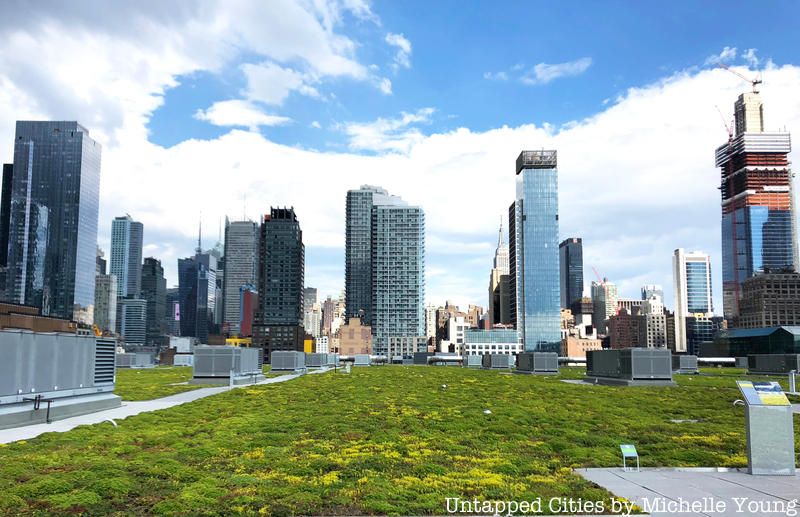
Atop the 840,000 square-feet Jacob K. Javits Center, the busiest convention center in the United States is a true hidden gem, a 6.75-acre green roof, which reduces heat gain, prevents approximately 6.8 million gallons of storm water run-off annually, and decreases the facility’s yearly energy consumption by about 26%. The second largest of green roof of its kind in the United States, it serves as a sanctuary for wildlife— home to 17 bird species, five bat species and 300,000 honeybees—and reduces energy consumption throughout the building.
From its high-efficiency, glass-encased façade to its advanced recycling practices and climate station, the Javits Center is on track to achieve LEED Silver certification by meeting the goal of exceeding New York State’s mandate of reducing energy and water consumption by 20% by the year 2020. In addition, the facility replaced its entire glass façade in 2015, as the building was previously one of the major sites of bird fatalities in the city.
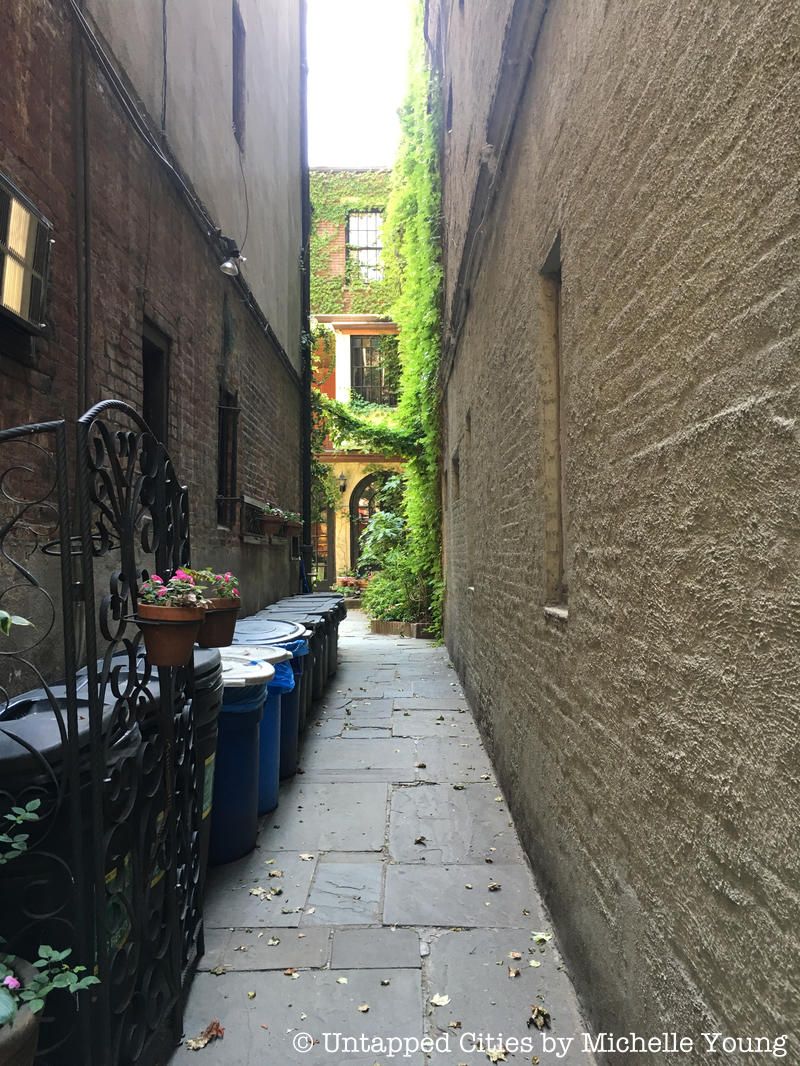
Tucked away between adjacent apartment buildings hides one of Hell’s Kitchen’s most beautiful views. Clinton Court, located at W 46th Street between 9th and 10th avenues is a small courtyard built when New York City was still mainly farmland. The courtyard can barely be seen through an iron gate, but only if you know it is there, as it is closed to the public.
Once inside the gates, it is hard tell exactly what year you are in. Clinton Court appears to have been unmoved by time and untouched since it was first built. Benches and winding staircases make it feel as though you were still in the time when it was a carriage house and might make you never want to leave.
Even though it is closed to the public, you can still get the same escaping effect just by looking at Clinton Court through the gate, and almost forget that you’re only a few minutes walk from Times Square.
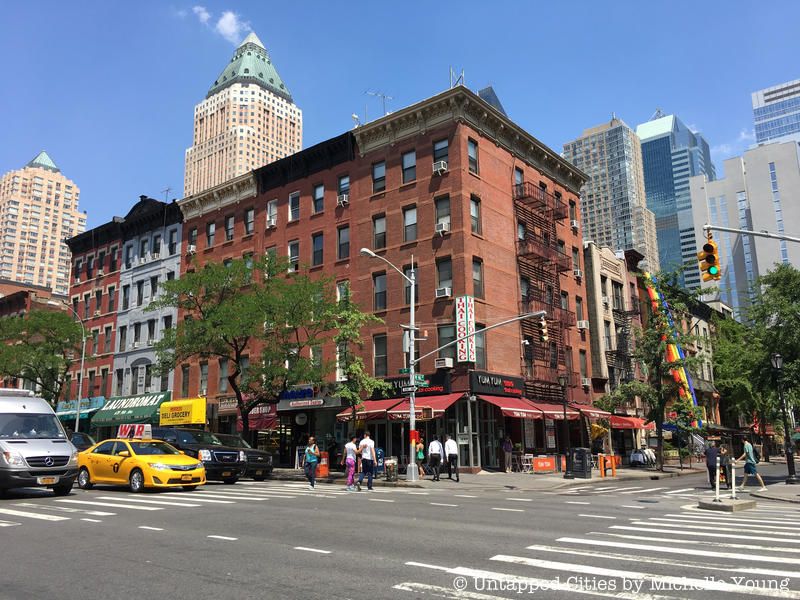
As you might have guessed, Hell’s Kitchen attracts a lot of theater dwellers since it’s so close to Broadway, which in return means plenty of restaurants to feed visitors. The block on 46th St. between 8th and 9th Ave. has been rightfully been nicknamed “Restaurant Row” due to its scores of food outlets.
Restaurant Row offers some of New York City’s best, and most diverse, food in just one stretch. Whatever you have a craving for, there is a good chance that you will find it here. Sushi, Italian, Creole, Korean, all can be found in great quality, truly making it a foodie’s dream and an absolute must visit in Hell’s Kitchen.
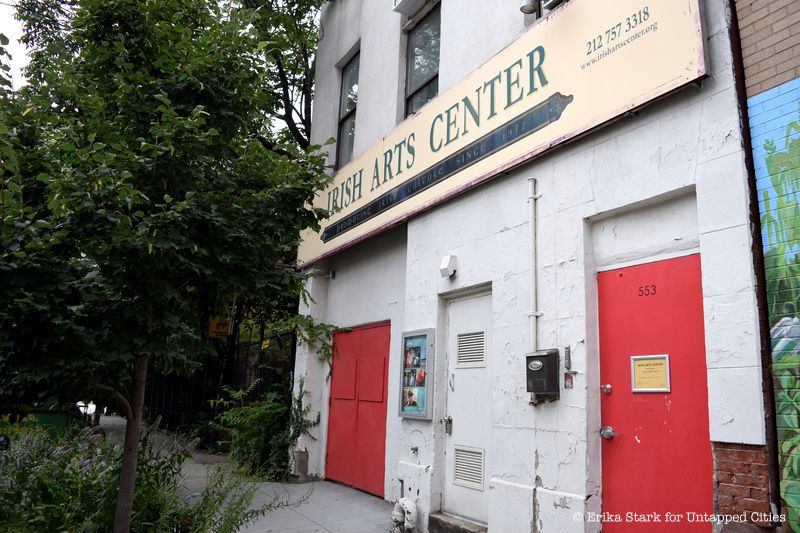
The Irish Arts Center is a museum that uses the arts to showcase the heritage and culture of Ireland. Films, theatrical performances, and music are some of the ways that the center showcases Irish culture.
The center is currently located at 553 W 51st Street but is in the process of developing plans to build a new, bigger facility to increase their influence and expand their community.
The goal of the Irish Arts Center is to “forge and strengthen cross-cultural partnerships, and preserve the evolving stories and traditions of Irish culture for generations to come.” The center pursues their goal by creating a community of artists and performers from all backgrounds to reach broader horizons in their education on Irish culture.
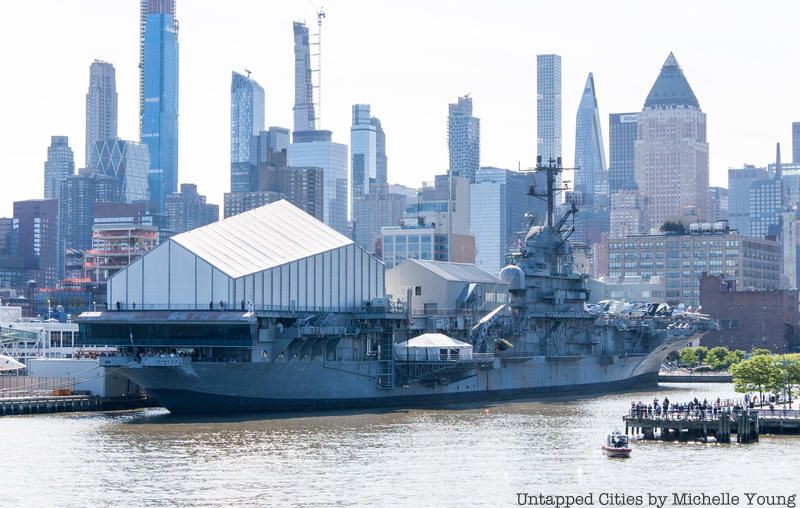
Found at Pier 86 on 46th St., the Intrepid Sea, Air and Space Museum is a non-profit educational museum focusing on groundbreaking aircraft and vessels. The museum’s staple attraction is the aircraft carrier Intrepid, which was used in World War II, The Cold War, and The Vietnam War until its decommission in 1974. It is now docked at the museum, and is the home to many exhibits for the Intrepid Sea, Air and Space Museum, including several authentically restored aircraft, as well as exhibits demonstrating life aboard the vessel while it was in use.
Located within the Space Shuttle Pavilion is the historic Enterprise space shuttle, which helps showcase the history of space travel throughout humanity. As you enter the space shuttle, you are greeted by actual audio between Enterprise pilots and mission control during flight tests.
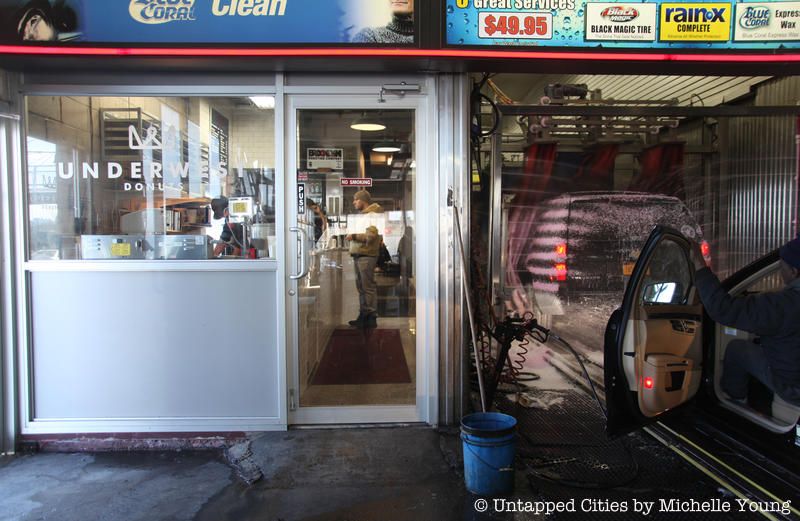
Underwest Donuts sells some amazing donuts, but its background and unconventional location alone makes it a must visit place. The somewhat hidden boutique donut shop opened in December 2014 inside the 24-hour West Side Highway Car Wash, reflecting Hell’s Kitchen’s drastic changes in demographics and urban landscape. The entrance to Underwest is located where cars first get sudsed up after being dropped off, across from a window through which drivers can watch their cars getting washed. “Underwest” comes from the nickname of the West Side Highway, when it ran elevated above the car wash.
You can order coffee, tea, or a variety of espresso drinks with your donut as well. Everything is made from scratch and donuts are slightly smaller than your average ones, with flavors ranging from Coco Raspberry to Maple Waffle, Strawberries and Oats, Banana Milk, and even a signature “Carwash” flavor (Vanilla-Lavender). Whether or not you need a car wash, Underwest Donuts is a must-visit in Hell’s Kitchen.
Learn more about Underwest’s history and owner in our coverage here.
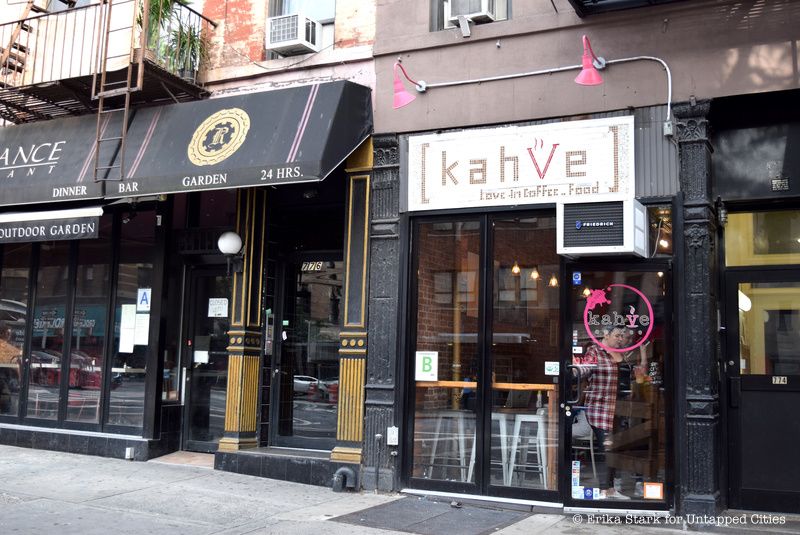
Located at 774 9th Avenue, Kahve, literally translated to “coffee” in Turkish, is a cozy little coffee shop that has been a staple in Hell’s Kitchen since its opening. The burlap-covered benches, wooden tables and brick-lined wall creates a comfortable atmosphere that any coffee shop enthusiast can enjoy as they sip their drinks. At Kahve, one can enjoy Turkish coffee, Colombian coffee, as well as a variety of their signature drinks that include lattes and frappes.
Kahve recently opened up a second store location a few blocks away from the original on 10th Avenue The new location is a bit bigger with a lighter, yet still cozy vibe, and also doubles as a wine bar as part of the shop’s attempt to expand their horizons.
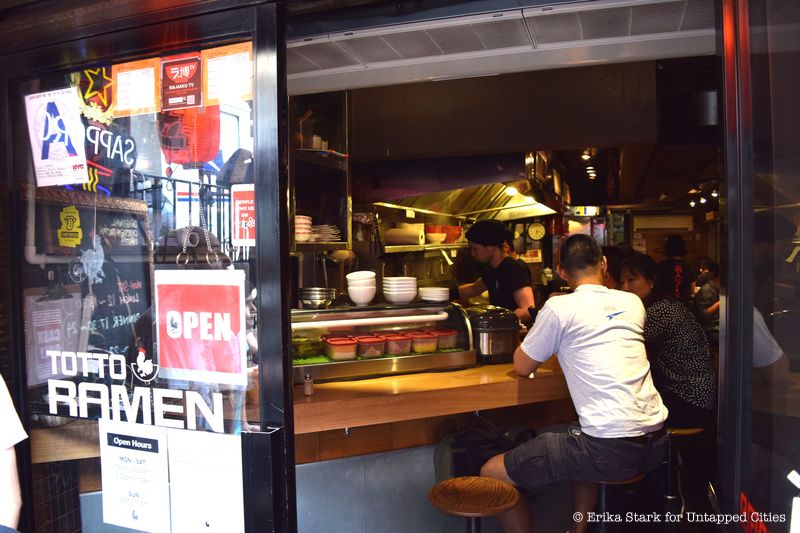
Totto Ramen is a ramen noodle restaurant with three locations around New York City (Midtown West, Midtown East, and Hell’s Kitchen). The two Hell’s Kitchen locations are at 464 West 51st St and 366 West 52nd Street, and is one of the city’s great hidden gems – and continues to be one of the best ramen spots despite the onslaught of new shops. Totto Ramen’s is most notably known for their signature Totto Spicy ramen, or if you’re feeling extra daring, they always serve an extra spicy version of their signature dish.
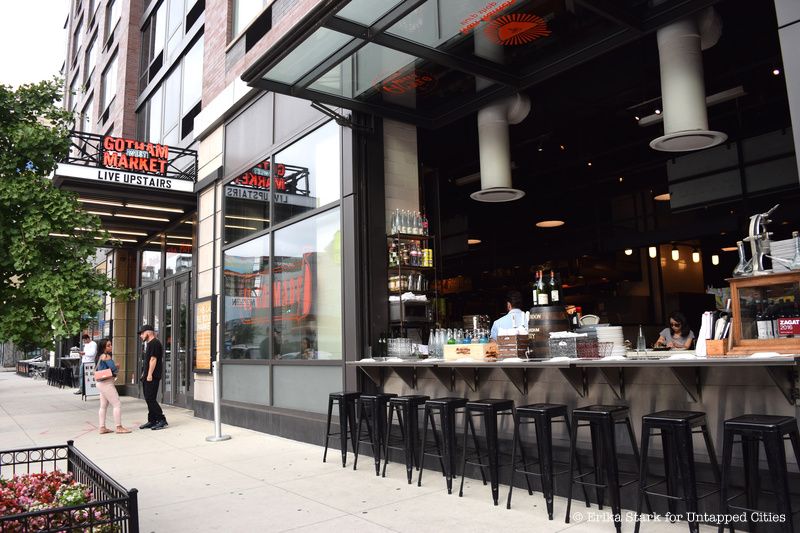
Covering the entire ground floor of the block at 600 11th Avenue Gotham West Market has a variety of diverse food options that are sure to meet any cravings you may have. The food hall is filled with options ranging from sushi, frozen desserts, and classic sandwiches. You can find cured meats and over 200 global beers at “The Cannibal,” spunky ice cream flavors at Ample Hills Creamery, classic ramen at Ivan Ramen Slurp shop, and other cuisines including all-fare American, Indian, and Mexican.
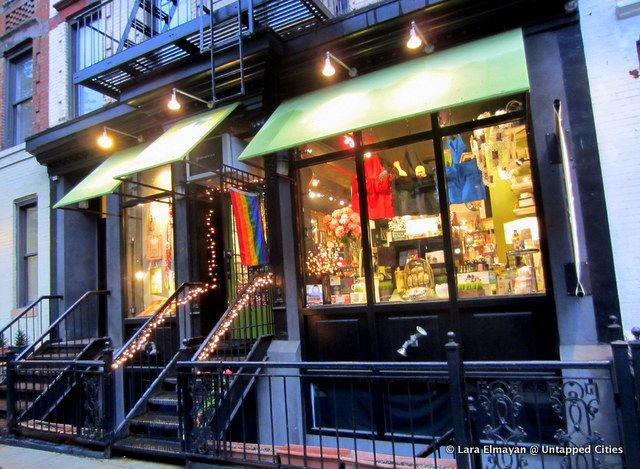
Delphinium Home is a quaint little home accessories and gift store at 353 W 47th Street. The store opened in 1999 on Ninth Avenue after the success of owners John Soroka, Michael Quinn, and Gary Alaimo’s first store, Delphinium, Ltd., which focused mostly on cards and gifts. As the store continued to grow and attract customers from all over New York City and the world, Delphinium Home moved to a bigger storefront at its current home on 47th Street and also combined with the owners’ original business venture.
Delphinium Home’s idea was to create a store in which customers could buy fun and unique gifts in a friendly environment, and create a different sense of shopping experience from the typical Hell’s Kitchen bustle. Based on their continuing popularity and growth, it’s safe to say that they have succeeded with their goal.
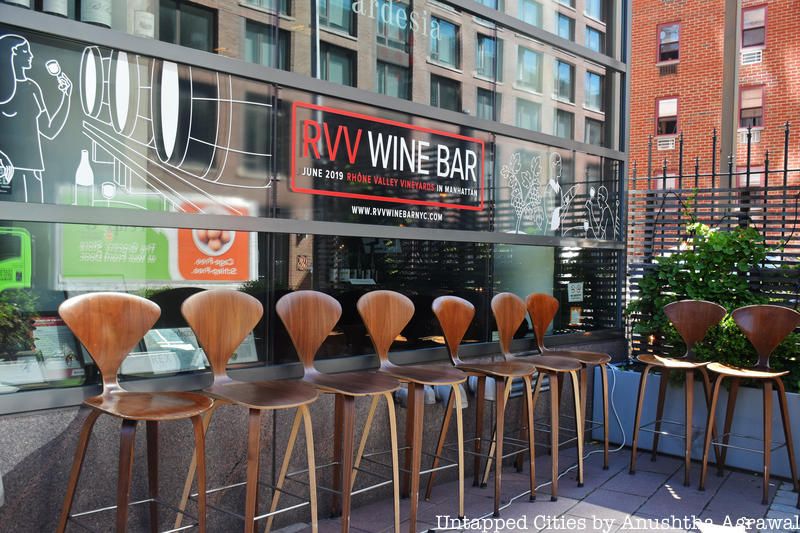
Part of New York City’s charm is that there is always something for everyone. Ardesia wine bar is located at 510 West 52nd Street has a bit of a more modern nightlife feel when you walk into the bar. The sleek design and endless bottles of wine on the wall give a professional impression, yet it’s still a place where you can relax.
The combination of the seemingly endless selection of wine, the food, the mixed drinks, and the atmosphere make Ardesia an absolute must visit bar in not only Hell’s Kitchen, but New York City.
Next, check out 22 Must-Visit Places in the Upper East Side, NYC: An Untapped Cities Guide and our archive of “Must Visit” Guides in NYC. Get in touch with the author on Instagram @mrich20
Subscribe to our newsletter